Canadian Hemlock is often called by the common names ‘Tsuga canadensis’, and ‘eastern hemlock’. It is an evergreen tree that reaches a height of 70 feet in the absence of tampering. It is noteworthy that it is one of the many common evergreen native trees found in the forests of eastern North America and is not invasive. From the point of view of structure, they are pyramidal or conical.
Do you also want to grow Canadian Hemlock in your landscape to give it a great look and texture? If yes! So let us know all the aspects that are necessary to keep Canadian Hemlock including its growing, care, cultivation, and pruning.
Why should you choose Canadian Hemlock?
The needles (their leaves) on these trees are small in size and two-toned, which when crushed give a pleasant aroma. Seeds are hidden in these needles, which are less than an inch long, small, and oval-shaped. Whereas their complete form becomes a spiral. Due to all this, these trees have excellent structure which makes them popular.
I’m sure there’s a spot in your landscape where shade persists and you’re looking for an option that can fill that spot! So there you have the Canadian Hemlock. These trees and shrubs, which can last from 4 to 800 years depending on the variety, can keep your landscape interesting forever by planting them once.
This tree is beautiful and has excellent texture and demands normal care and less dirt is seen around it. All these qualities are enough for any discerning gardener to choose such a tree or shrub for their landscape.
Growing and Caring for Canadian Hemlock
The best time to plant Canadian hemlock trees is in early spring. These trees fall into the category of medium-fast-growing trees, growing at an average rate of about 12 to 24 inches per year. One thing that makes them very special is that they are shade-tolerant.
Let us know what the needs of eastern hemlock are so that we can give them healthy care.
Sun
Hardy in USDA zones 3 through 5, it can thrive comfortably in cool northern climates with full sun. Also, Canadian hemlock grows best in partial shade in other relatively warm areas. From this point of view, about the Sun, they have the opposite nature to other big trees. This quality of theirs is good news for many gardeners.
Soil
Canadian hemlock or eastern hemlock prefers loamy and acidic soils. It also has to be provided with moist soil with good drainage.
Water
Hemlock trees require a lot of water to perform well, especially when the weather is dry. Prolonged drought is unbearable for it. But the soil needs to be well drained. Because it cannot stand in a waterlogged place. Its water requirement can be estimated from the fact that it can survive even in abnormal conditions like partial sunlight and average soil with alkaline pH if it gets proper water.
You might be wondering when and how to water it. So it’s very simple. Make a routine of deep watering once a week. Spray the leaves starting from the trunk of the tree or bush, so that insects along with dust and pollution are removed. Then leave the garden hose near the roots for 20 to 30 minutes. Just doing this will be enough.
Ideal conditions of Temperature and Humidity
Being a resident of eastern North America, this tree is accustomed to cold, humid climates and grows in such areas. Talking about the ideal temperature for it, it grows well in places where the average winter temperature is 10 degrees Fahrenheit and the average summer temperature is 60 degrees Fahrenheit. Whereas in areas where rainfall is less than 30 inches, it is considered ideal humidity.
Fertilizer Requirements
Canadian Hemlock are not big feeders, so giving them a balanced fertilizer once a year is sufficient. Refer to the product label for dosage information. If you have just planted these plants then do not be hasty in giving fertilizer. This will prevent the plants from burning their roots. It takes a few months for the plant to get established, only then give fertilizer.
Some Key Points About Canadian Hemlock
- Once mature, the bark of Canadian hemlock trees becomes reddish-brown.
- Canadian hemlock woods are softwoods that are often used to make things like boxes, pallets, and plywood.
- Often people confuse ‘Canadian hemlock’ and ‘hemlock (Conium maculatum which is a poison)’ as the same. Whereas these are not related to each other in any way. Hemlock (Conium maculatum) is a flowering herb that is poisonous. Canadian hemlock, on the other hand, is a tree or shrub that is in no way poisonous to humans and pets.
Cultivars of Canadian Hemlock
Approximately 40 cultivars of Canadian hemlock exist, each known for its characteristics. They have evolved to survive in different conditions and to be used in different ways across landscapes. Native Canadian hemlocks often have the character of a tree and tend to grow quite large.
Sometimes these are unsuitable as trees for homeowners and this is where their varieties come in handy. Here is a brief description of some of the popular and main cultivars…
01. Eastern Hemlock ‘Minuta’ (Tsuga canadensis ‘Minuta’)
 It is a dwarf conifer which grows very slowly. Grows only 2 to 4 cm per year.
It is a dwarf conifer which grows very slowly. Grows only 2 to 4 cm per year.- Eastern Hemlock ‘Minuta’ has short dark green needles while the shoots are densely arranged. From May onwards, cones emerge which are blue-green.
- They are pyramidal and form a bushy, circular mound. It is approximately 45 cm tall when mature, while the mature width is 50 cm.
- Best Use: City and courtyard gardens, Patio and container plants, Gravel garden, Rock garden.
- To grow them you have to keep these points in mind…
- Care: It is at risk from cold, dry winds, so take necessary measures.
- Soil: The soil should be moist but well-drained. It should be rich, fertile, and acidic to slightly alkaline.
- Sun: Full sun or partial shade
- Water: Water regularly so that drought conditions do not arise.
02. Eastern Hemlock ‘Jeddeloh’ (Tsuga canadensis ‘Jeddeloh’)

Source: Tsuga canadensis ‘Jeddeloh’ by F. D. Richards under CC BY-SA 4.0, via Flickr Eastern Hemlock ‘Jeddeloh’ is a dwarf conifer.
- It is a compact, bushy, and evergreen shrub.
- In their early years, they appear bright green.
- With its arching branches, it forms a small, rounded bush that adds to the landscape.
- Its leaves are dark green with two white stripes.
- When mature it reaches a height and width of 40 to 60 inches.
- It grows very slowly and takes 10 to 20 years to reach mature height.
- Best Use: Gravel garden, Architectural garden, Rock garden.
- To grow them you have to keep these points in mind…
- Care: Protection from strong dry winds and hot afternoon sun.
- Soil: Humus-rich moist but well-drained, acidic to slightly alkaline soil.
- Sun: Partial shade to full shade, tolerant of full sun in cool northern climates.
- Water: Intolerant of drought, requiring regular watering during prolonged drought, especially when plants are small.
03. Weeping Eastern Hemlock (Tsuga canadensis ‘Pendula’)
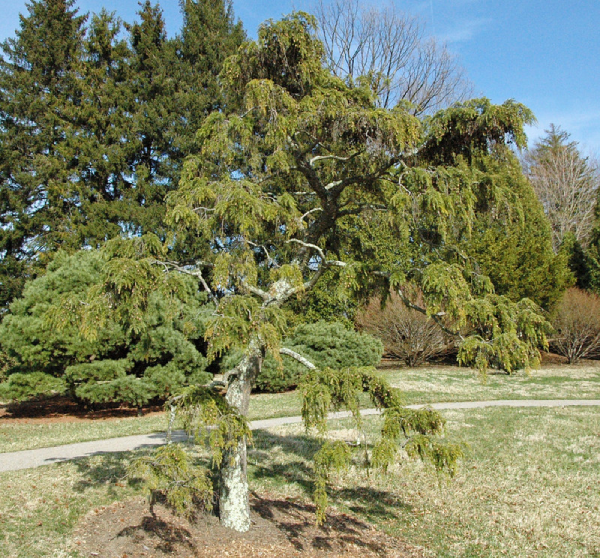
- Tsuga canadensis ‘Pendula’ is an evergreen coniferous shrub.
- It is a medium-sized shrub that forms a mound of overlapping branches.
- These widely spreading shrubs have small dark green needles, each with two white lines down the side.
- It reaches a maximum height of 2.5 to 4 meters and a width of 4 to 8 meters, which takes about 20 to 50 years to achieve.
- Best Use: Architectural garden, Rock garden, Gravel garden, Specimen tree. Effective on hanging over a bank or wall.
- To grow them you have to keep these points in mind…
- Care: Protection from strong dry winds and hot afternoon sun.
- Soil: Moist but well-drained, acidic, alkaline, and neutral soils.
- Sun: Full sun to partial shade.
- Water: Intolerant of drought, requires regular watering.
Must read: Blue Arrow Juniper: Tips for Plant, Care, Design Ideas, and More
Pruning process for Eastern Hemlock
Canadian hemlock trees or shrubs are naturally prune-free (depending on the variety). Therefore they usually do not need pruning. But some varieties and special conditions demand pruning. Here we are talking about which Canadian Hemlocks should be pruned and which should not, when to prune, and how to do it.
Which Canadian Hemlocks to Prune
Compact cultivars or bushy varieties are commonly planted as foundation plantings or privacy hedge plants. Thus, it becomes necessary to maintain them in the right shape, for which they need to be pruned. These can be encouraged to take the right shape by pruning them as needed from a young age.
On the other hand, any hemlock needs pruning if any part of it is damaged by disease or weather. Otherwise, damage or disease will start harming other parts or the entire tree/plant.
As another circumstance, upright hemlock varieties require pruning. This is because these types of varieties look best when only the main stem grows. Competing stems spoil their look and should be pruned.
Similarly, there may be some other situations when you may need to do pruning. Now let us see when pruning should be done.
When to Prune Hemlock
Spring or early summer is considered the best time to prune. This is the time when the tree is actively growing. It is devoting its energy to stimulating new growth. Pruning at this time will cover the removed parts very quickly, which is good for it.
On the contrary, in winter, plants start hardening themselves to fight the winter and stop the growth process. If pruned in the fall and winter the plant may (by its nature) become confused and return to active growth rather than dormancy. In the best case, the cold will kill new growth arising at this time. In the worst case, either the tree will be unable to withstand the winter cold or the entire tree will die.
Homeowners need to keep this in mind because autumn and winter are the times for pruning most plants. But this is not the case with hemlock, and if it is done then it will only cause harm.
How to Prune Hemlock Trees
- If you want to trim a hemlock that is damaged by weather or disease,
- Prepare your pruning kits and disinfect them.
- Mark the areas of the hemlock you want to prune, so you don’t accidentally prune more than necessary.
- If the tree is extensively damaged, perform severe pruning. Hemlocks can recover from losing up to 50% of their branches.
- If you are pruning for shape,
- Imagine or mark the size in advance.
- Cut them slowly and shape them into desired shapes. There may be a possibility of cutting too much in a hurry.
- If pruning upright hemlock varieties,
- Identify the competing stems emerging from the main stem.
- Cut them from the starting point on the main stem or at any location for lateral growth.
Canadian Hemlock Propagation
Although there can be many methods of propagating Canadian Hemlock. But generally, there are 2 methods prevalent among gardeners, about which we are going to talk here. You can adopt any method at your convenience, and both methods are very easy.
Canadian Hemlock (or Eastern Hemlock) Propagation by Cuttings
 In this process, you have to wait till the end of summer.
In this process, you have to wait till the end of summer.- Select a branch from this year’s mature semi-hardwood, which should be green at the tip but brown towards the base of the node.
- Dip the base of the cutting in rooting hormone powder, so that rooting can be successful and roots can grow easily.
- On the other hand, take a pot filled with potting mix and with good drainage.
- Plant the cuttings in pots at a depth of about 2 to 3 inches and keep the soil moist only without wetting it.
- Make sure to maintain moisture going forward. For this, you can check by touching the soil of the pot, if the top 1 inch seems dry, it means they need to be watered.
- As most species of Canadian hemlock require sun, place them in a partially shady location. If you want, you can also consider keeping them near the window inside the house, so that the plants can get a greenhouse effect.
- Hemlock cuttings will be ready for planting in late spring.
Eastern Hemlock Propagation by Seeds
To propagate by seeds you will need seeds. You can either buy these or collect the seeds yourself from trees in your neighborhood. Canadian hemlock produces cones and inside those cones are seeds. During the fall the cones begin to dry, causing them to open and spill out the seeds. When the cones start changing from light green to brown, the seeds are mature and ready to be released.
- The seeds are dormant at this time and are not ready to germinate. Therefore they have to be cold-stratified.
- For stratification, take some lukewarm water (not hot) and leave the seeds in it for 24 hours.
- After this, take them out of the water and let them dry on a paper towel for 24 hours.
- Now take a pot that has a good drainage system and is filled with potting soil.
- Sow the seeds about half an inch deep in the soil, so that they do not remain above the soil. If necessary, you can add a light layer of soil.
- Water gently until the soil is thoroughly moistened.
- The best time to do the above procedure is in autumn so that they can spend the winter outside. Leaving them in the cold is part of the stratification process. Whereas they will germinate only after spring.
- Cover the seeds sown in the pot with a cloth, for which you can use a window screen or hardware cloth. If this is not done, the seeds are eaten by various types of insects.
- Keep the seeds moist throughout the winter by watering them as needed, but avoid over-wetting.
- When spring arrives, remove the covering cloth so that the sprout does not face any problems in growing.
- After some time, the seedlings will grow up to a few inches tall, after which they can be transplanted into small pots or beds. If you’re not in a hurry, let them harden off a bit in the same pot until autumn and then transplant.
Must read: How To Grow Viburnum In The Garden And The Pot
Potting and Repotting Canadian Hemlock
It is often asked ‘Can I grow Canadian Hemlock in a container?’ Canadian hemlocks are very tall and wide trees. For this reason, they are ideal for planting in the landscape. It is possible to grow them in containers, but meeting their needs such as water and their size becomes a problem.
It may be disappointing to you that dwarf varieties are also not suitable for growing in containers. If any Canadian hemlock is suitable for a container then only bonsai varieties.
If you try hard enough, you can grow hemlock in containers. But they are generally more suitable for planting directly into the ground where they have enough room to spread their roots and are easier to meet their needs.
Pests & Diseases of Canadian Hemlock (or Eastern Hemlock)
Canadian Hemlock is rarely troubled by any disease. But it is important to keep these trees and bushes healthy and take good care of them.
On the other hand, Canadian Hemlock is sensitive to some pests. Some insects cause serious damage, make treatment very difficult, and, if not controlled, can lead to the death of the tree. The pests mentioned below are equally dangerous for Canadian Hemlocks as well as other Hemlocks.
Insects that trouble hemlock
Hemlock Woolly Adelgid (HWA)
Hemlock woolly adelgid (Adelges tsugae) is a very dangerous threat to hemlock in the home landscape, including in hemlock native areas. These are small in size and appear like white woolly masses. Relatives of aphids, the job of these insects is to suck the juice of plants and they are also quite aggressive. Not only this but when they attack hemlock, they also invite other insects, which you will read below.
They are found at the base of needles under the branches of infected trees. These can be eliminated by pesticides. But you will have to work a little hard. Because they are not easily controlled.
Elongate Hemlock Scale
Elongate Hemlock Scale sticks to the underside of the needles. It is a small insect with oval hard cover which is brown or white and by sucking the sap of the tree, it weakens the tree.
The bad thing about them is that they specifically target hemlocks that have been attacked by Hemlock Woolly Adelgid (HWA). In other cases, if a hemlock is affected by drought, it can also be attacked.
Protecting his hemlock trees from two dangerous pests is no less than a challenge for gardeners and it requires tireless efforts.
The Hemlock Looper
The Hemlock Looper (Lambdina fiscellaria) Insects with feathery antennae, when active on hemlock, cause serious damage to various parts of the tree due to their large numbers.
The Spruce Spider Mite
These spider mites are more active in hot weather. Their job is to suck the sap from the needles, which the trees become very weak to compensate for. Infected needles become spotted and appear yellow to brown. To eliminate them, miticide should be used instead of insecticide. They reproduce very quickly, so you need to constantly monitor and treat them promptly when indicated.
The Hemlock Borer
Hemlock Borer (Phaenops fulvoguttata) is opportunistic and attacks hemlock trees that have already been damaged by other insects. Weak hemlocks become their easy prey.
If your hemlock has been infested by other insects, small oval holes are visible in its bark, and there is a pile of bark pieces at the base of the tree, then understand that it has been attacked by Hemlock Borer. You need to take immediate action.
The solution is to remove the bark, which will kill their larvae. If not controlled, cut down and destroy infected trees, so that other trees do not get infected. The best solution would be to meet your Hemlock’s needs, take good care of it, and keep it healthy.
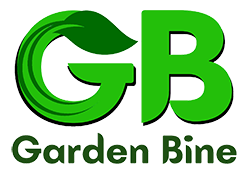
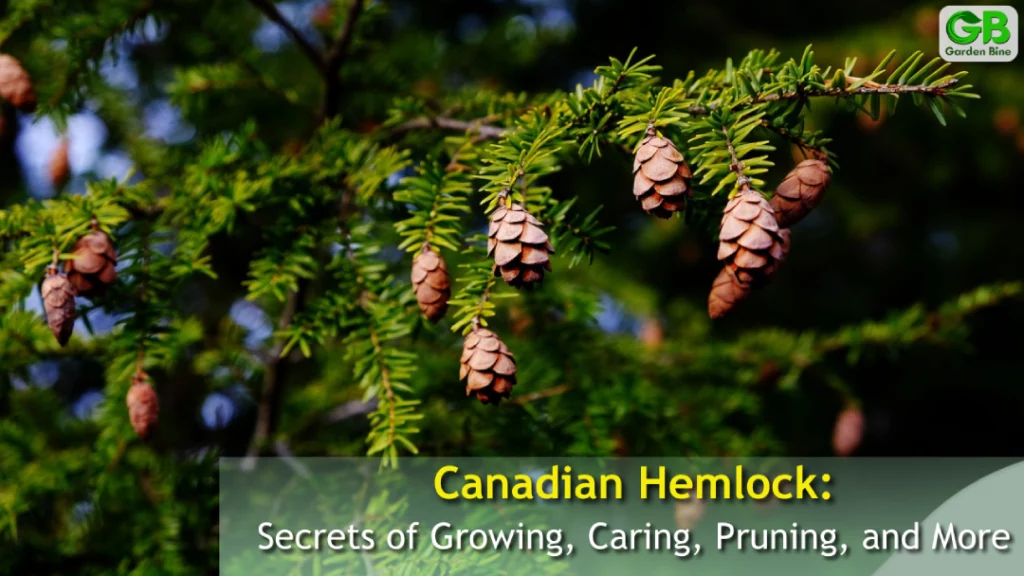
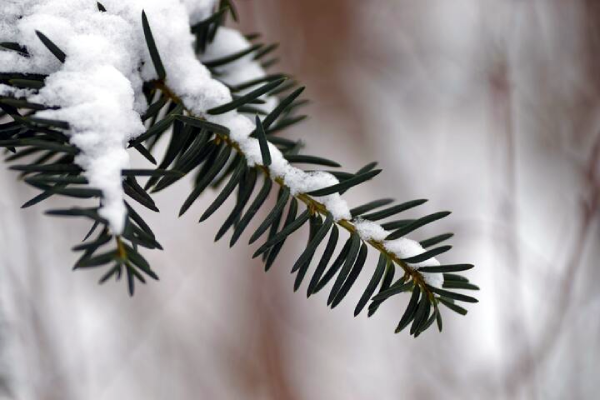 It is a dwarf conifer which grows very slowly. Grows only 2 to 4 cm per year.
It is a dwarf conifer which grows very slowly. Grows only 2 to 4 cm per year.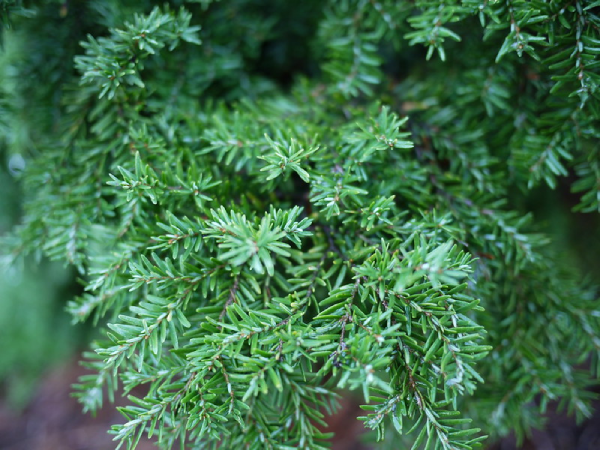
 In this process, you have to wait till the end of summer.
In this process, you have to wait till the end of summer.








